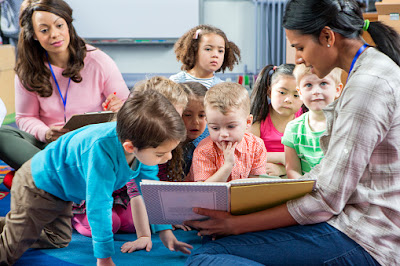It’s important to model positive behaviour in front of children as they learn by observing and imitating those around them. Lead by example: Children learn by monitoring and replicating adults, so model good manners yourself.
1. Be clear and consistent: Establish clear rules and consequences for good and bad behaviour, and stick to them.
2. Praise good behaviour: Reinforce good manners by praising children when they exhibit them.
3. Teach polite language: Encourage children to use polite words like “please,” “thank you,” and “excuse me.”
4. Teach table manners: Teach children how to sit correctly, use utensils, and other dining etiquette.
5. Encourage empathy: Teach children to think about how their actions affect others, and encourage them to consider others’ feelings.
6. Discuss respectful behaviour: Talk to children about why it’s important to respect others and their belongings.
7. Give opportunities to practice: Create opportunities for children to practice good manners, such as at meal times or in social situations.
Social Etiquettes
8. Respect personal space and boundaries
9. Avoid interrupting others
10. Use proper language and tone
11. Wait your turn to speak in conversations
12. Avoid speaking loudly or aggressively
13. Offer help and support to others
14. Listen actively and empathize
15. Don’t gossip or spread rumours
16. Be prompt and reliable in commitments
17. Thank people for their help and kindness.
Table and Dining Manners:

18. Arrive on time for the meal.
19. Wait for everyone to be seated before starting to eat.
20. Keep your phone on silent or vibrate.
21. Use utensils properly.
22. Chew with your mouth closed.
23. Avoid talking with food in your mouth.
24. Pass dishes to the left.
25. Don’t reach across the table.
26. Thank the host or hostess for the meal.
27. Offer to help clear the table and clean up.

Etiquettes to Behave with Neighbors
28. Be respectful and courteous.
29. Avoid loud noises, incredibly late at night.
30. Avoid parking in front of their driveway.
31. Introduce yourself and get to know them.
32. Offer to help them with tasks, such as shovelling snow.
33. Keep your property tidy and well-maintained.
34. Be mindful of shared spaces, such as driveways and sidewalks.
35. Avoid conflicts and address any issues calmly and reasonably.
36. Respect privacy and avoid intruding.
37. Show appreciation for small acts of kindness.

Etiquettes to Behave with Classmates
38. Be respectful and courteous.
39. Listen actively and engage in discussions.
40. Avoid interrupting others.
41. Be supportive and encourage your classmates.
42. Avoid negative or hurtful comments.
43. Be open-minded and consider different perspectives.
44. Share your own thoughts and experiences respectfully.
45. Cooperate and work together on group assignments.
46. Show up on time and be prepared for class.
47. Be inclusive and show respect for everyone, regardless of differences.
Respect Teachers, Women and Elders
Respecting teachers, women, and elders is fundamental to many cultures and societies. It shows appreciation for their knowledge, experience, wisdom,, and recognition of their essential community roles It can involve listening to them
49. Show them gratitude
50. Honor their opinions.
51. Give those special privileges or deference in decision-making.
Road Etiquettes for Children

52. Teach them to follow traffic rules and signals.
53. Explain the importance of wearing seat belts.
54. Teach them to be polite and respectful to other drivers.
55. Demonstrate the dangers of distracted driving, such as texting while driving.
56. Teach them to be cautious and aware of their surroundings while crossing the road.
57. Explain the consequences of reckless and aggressive driving.
58. Encourage them to be patient and take turns while driving or crossing the road.
59. Show them how to respect pedestrian rights, such as yielding to pedestrians at crosswalks.
60. Teach them to share the road with cyclists and give them enough space.
61. Reinforce the importance of not driving under the influence of drugs or alcohol.
Will you like to add what particular etiquette you are teaching your children?
*Thanks to Pixabay and Google Images for relevant images.









